Most old houses in Minneapolis and Saint Paul have masonry chimneys. Some of them serve wood-burning fireplaces, but many of them only serve as a chaseway for a gas appliance vent. When these chimneys need service or repair, it gets surprisingly expensive. The good news is that there’s an alternative to repair; removal below the roof line.
During a recent team training event for my company, I had my eyes opened and my mind blown. First, check out the photo below. This is a second-story masonry chimney, used to vent the boiler and water heater.
Not too bad, right? Sure, there’s some missing mortar that needs to be serviced, but that’s about all we’d recommend as home inspectors, right?
Wrong.
One of the guys on my team, a Certified Chimney Sweep by the Chimney Safety Institute of America (CSIA), gave us the lowdown on these old masonry chimneys. Removal below the roof line is usually the best option.
Removal Process
To remove a chimney like this below the roof line, a chimney contractor would use a boom truck to dismantle the chimney brick-by-brick. They’d take it all the way down below the roof line.
Here’s a before and after from a different house, courtesy of Chimney Doctors:
After the chimney has been taken down below the roof line, the contractor needs to address the vent for the boiler and water heater. It’s that metal thing you see sticking coming up through the chimney. That single-wall vent liner is fine inside the chimney, but it can’t pass through the roof all by itself. You need a transition fitting installed, and then it would come out of the roof with a “B-vent”. It’s a double-walled vent, which helps to keep the inside warmer and the outside cooler.
At the top of the chimney, the flue is sealed off to prevent warm air from leaking into the attic space, and then new framing, flashing, and a roof covering are installed. At this point, the only thing sticking out of your roof is a metal B-vent, which has no expensive maintenance requirements.
The average cost for a project like this is in the neighborhood of $3K – $4K.
Repair process
The repair for this chimney would be more involved than simply removing a little bit of mortar and wiping some new mortar in there. It would require rebuilding a significant portion of the chimney. On a steep second-story roof, this gets very expensive because it can only be safely worked on by setting up scaffolding. The higher and steeper the roof, the more expensive it is to work on the chimney.
Our inspector estimated the repair cost to be in the range of $5K to $7K. This is far more expensive than removing the chimney below the roof line, and you’re left with a chimney that will still need to be serviced and maintained in the future.
If this were my house, I wouldn’t even consider having the chimney repaired. I’d have it removed below the roof line.
Why don’t more chimney contractors remove chimneys?
I chatted with Certified Master Chimney Sweep Steve Trumble, the owner of Chimney Doctors, to ask him why so many chimney contractors repair chimneys instead of removing them down below the roof line. He said it’s because most chimney contractors aren’t qualified to do this work. Once they start messing around with the gas vent, they’re moving into the territory of HVAC contractors, and most aren’t qualified to do that type of work; they’re masons.
Once his company moved into the HVAC world and starting servicing gas equipment, they realized it was far more economical to simply remove most chimneys below the roof line. In 2024 alone, they removed approximately 80 chimneys below the roof line. I say good riddance.
How to know when to repair or remove
If you’re thinking about tearing a chimney down below the roof line, the chimney must be located in the middle of the house. If the chimney is located on an outside wall, the fix wouldn’t simply involve removing the chimney below the roof line; it would require complete removal of the chimney, which would likely be cost-prohibitive.
To know whether it’s best to remove a chimney below the roof line or have it repaired, get estimates for both.
=

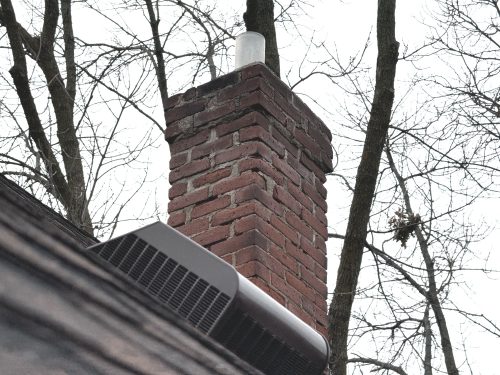
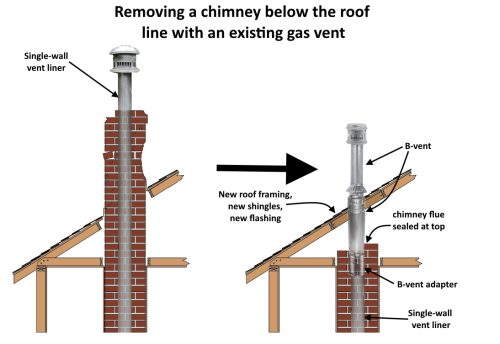
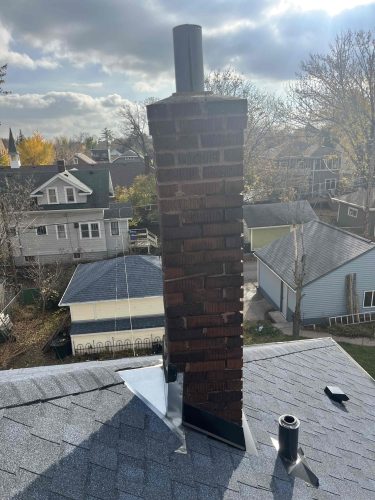
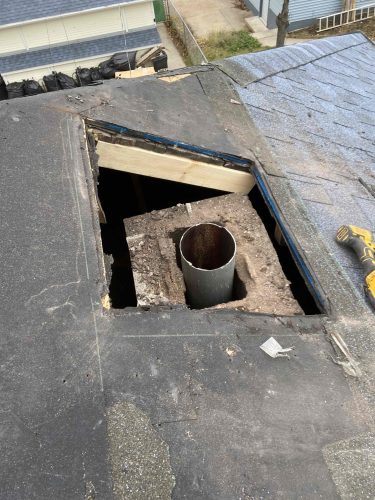
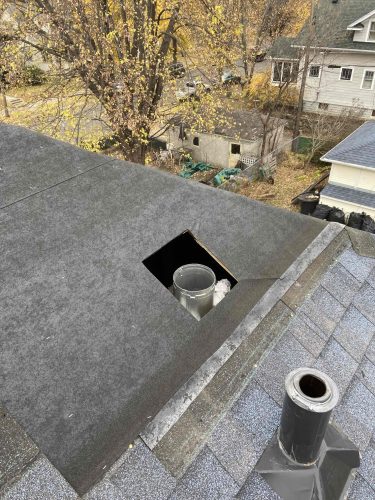
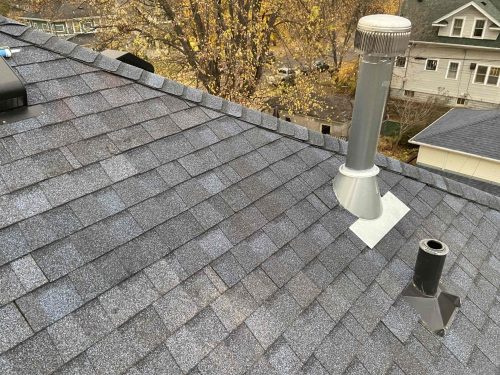
Reuben Collins
November 24, 2009, 8:46 am
I don’t know much about furnaces or water heaters, but according to the internet, some of the newer ones don’t even require a vertical vent through the roof. It looks like you can just vent them horizontally out the side wall of the house from the basement. For long-term planning for my home, when the time comes to replace the water heater & furnace, I will probably look for ways to completely abandon the brick chimney & liner so that the portion above the roof can be removed and the interior space reclaimed.
Reuben Saltzman
November 25, 2009, 5:59 am
Reuben – yes, you’re exactly right. Getting rid of your chimney and getting all that extra space in your house would be a great thing to do!
Water Heater Replacement Options | Reuben's Home Inspection Blog
December 4, 2009, 6:22 am
[…] by keeping water heated all day. If you’re replacing a standard water heater and there is a problem with the chimney or flue (which usually means it’s not up to code), it can be very expensive to repair the chimney […]
Double Glazing Rugby
May 17, 2011, 2:19 am
Most of the time, bad chimneys is not a big issue for all. They let their chimney slowly fell down. But in the real time, bad chimney needs a repair. To avoid any danger.
Reuben Saltzman
May 17, 2011, 4:35 am
Hey there, Double Glazing Rugby – I could have said it better myself.
Ashley Berryman
March 30, 2025, 6:43 pm
Anyone know what the cost of a complete removal on a tiny one-story is? I have a condensing furnace that yes-vents through my wall-and it does not appear structural. I am simply wondering what price I might expect. Thanks!
Reuben Saltzman
March 31, 2025, 11:34 am
Hi Ashley,
The average cost is in the neighborhood of $4,000.